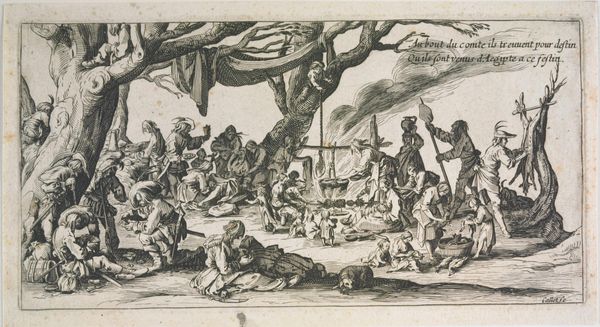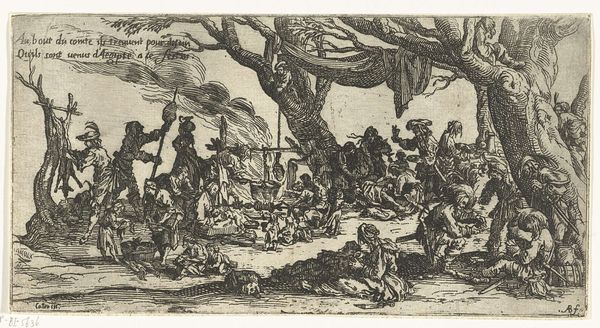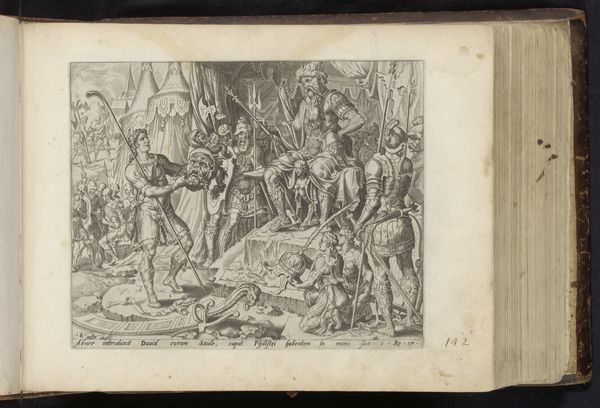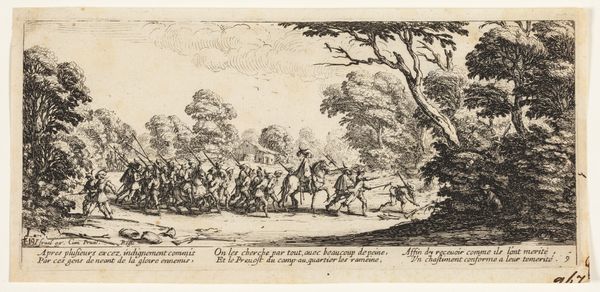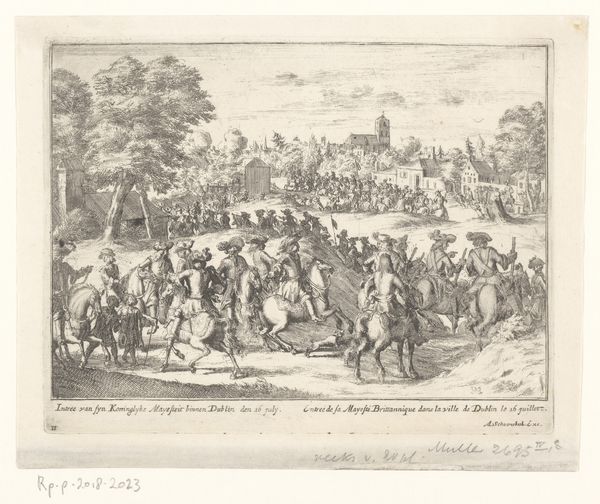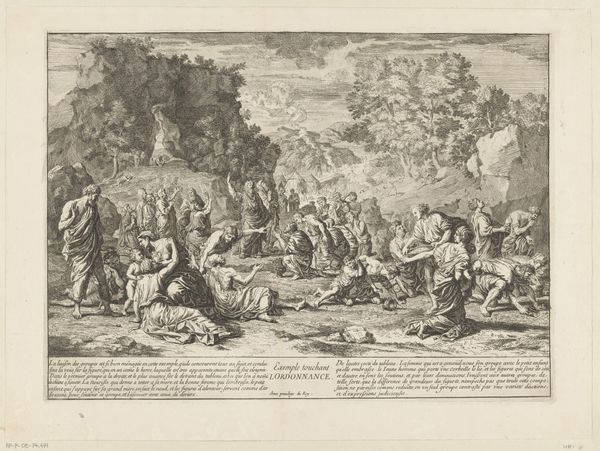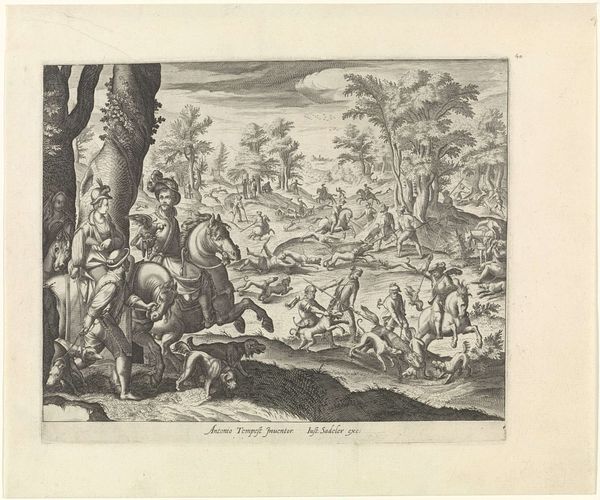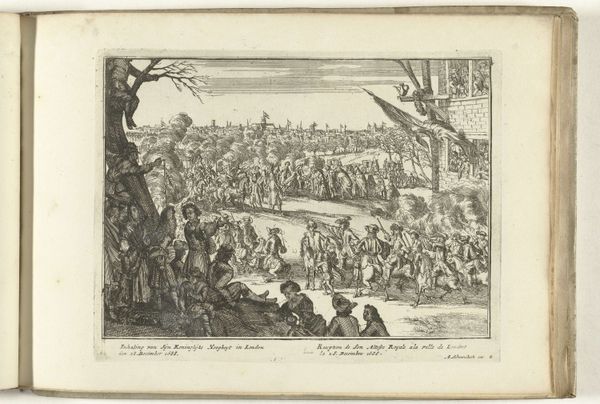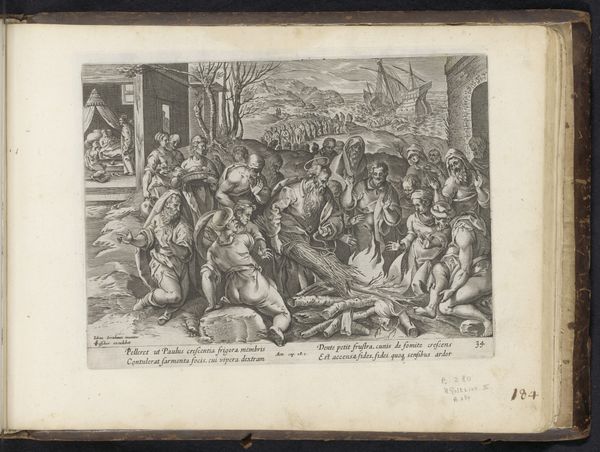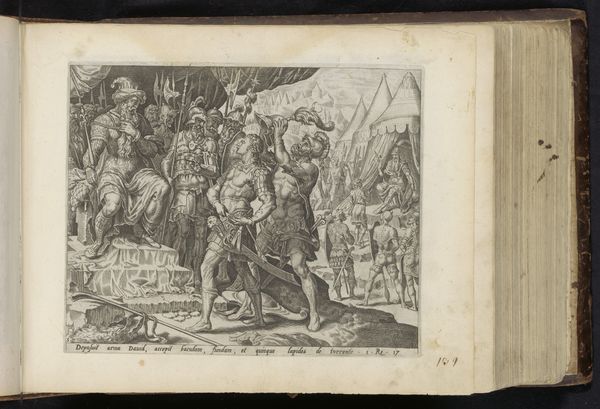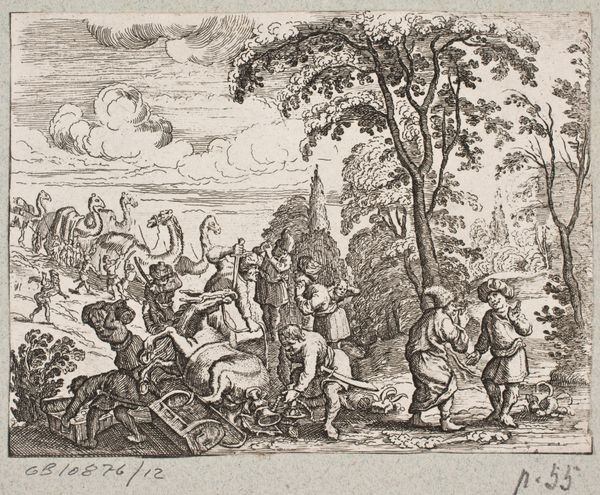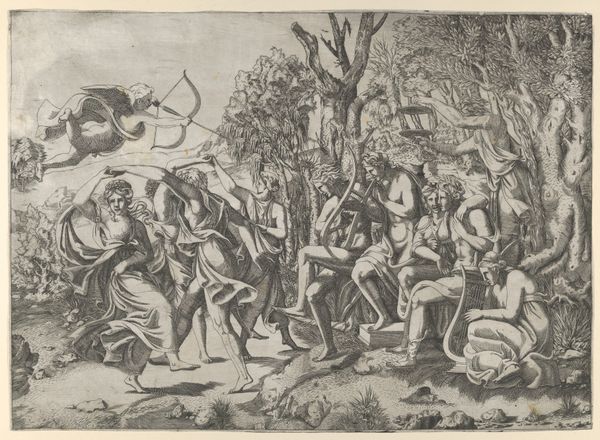
Copy of Le Halte des Bohémiens: Les Apprêts du Festin (The Gypsy Stopover: The Preparations for the Feast) , from Le Bohémiens, série appelée aussi Les Égyptiens, La Marche des Bohémiens, La Vie Errante des Bohémiens, Les Marches Égyptiennes (The Gypsies, series also called The Egyptians, The Gypsy Troops, The Wandering Lives of Gypsies, The Egyptian Troops) 1610 - 1700
0:00
0:00
drawing, print, etching
#
drawing
#
narrative-art
#
baroque
# print
#
etching
#
landscape
#
genre-painting
Dimensions: Mount: 6 15/16 x 11 7/16 in. (17.6 x 29 cm) Sheet: 4 15/16 x 9 7/16 in. (12.5 x 23.9 cm)
Copyright: Public Domain
Curator: Looking at this intricate scene, what strikes you first? Editor: The density of the figures! It feels incredibly busy, almost chaotic. But there's a certain raw energy about it. A very human scene, even if somewhat rough. Curator: Precisely. We're looking at a work entitled *Copy of Le Halte des Bohémiens: Les Apprêts du Festin* dating sometime between 1610 and 1700. It’s a print, an etching, by an anonymous artist and resides here at the Metropolitan Museum of Art. The series it belongs to is also known as "The Gypsies," or even "The Egyptians," names revealing how nomadic peoples were perceived and categorized back then. Editor: The title hints at feasting preparations, yet what stands out is the survival aspect depicted here. Everyone appears intensely involved in tasks—preparing food, tending to children—it shows a community carved out from a precarious existence. Curator: This touches upon a significant element: The symbol of the 'outsider.' Roma communities in the Baroque era were consistently marginalized. Their visual depiction was often laced with suspicion and misrepresentation. In this etching, can we discern an attempt at objectivity, or does it lean toward stereotyping? Editor: That's a crucial question. I'm intrigued by that very fine line. The detail suggests observation, but the composition risks flattening individual experiences into a singular idea of "gypsy life". It seems a product of its time, reflecting both curiosity and ingrained societal prejudices. There’s a large, overhanging tree, draped, maybe to create a shelter. One figure has actually climbed into the tree and sits within its boughs, nestled in the branches. It is evocative of the temporality of home; in nature, among nature, with nature. Curator: The symbolism in such landscape and genre scenes speaks volumes. These depictions contribute significantly to how collective memory is shaped and retained across generations. Even anonymous works play a role in either reinforcing stereotypes or prompting re-evaluation. Editor: Yes. Works like these are revealing not only of the culture depicted, but especially of the cultural presumptions of those who depict. It's quite an intricate piece, densely layered with figures, forcing you to really study it, despite the immediate impressions. Curator: It's a powerful reminder that visual culture is invariably intertwined with socio-political narrative. Editor: Indeed, this single etching sparks such a breadth of historical and psychological enquiry!
Comments
No comments
Be the first to comment and join the conversation on the ultimate creative platform.
